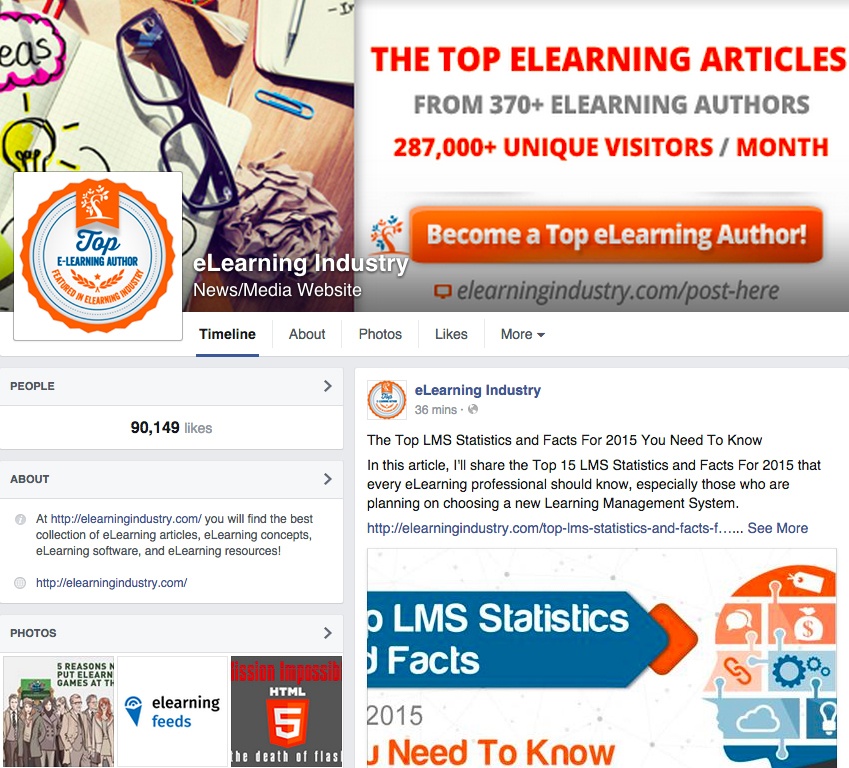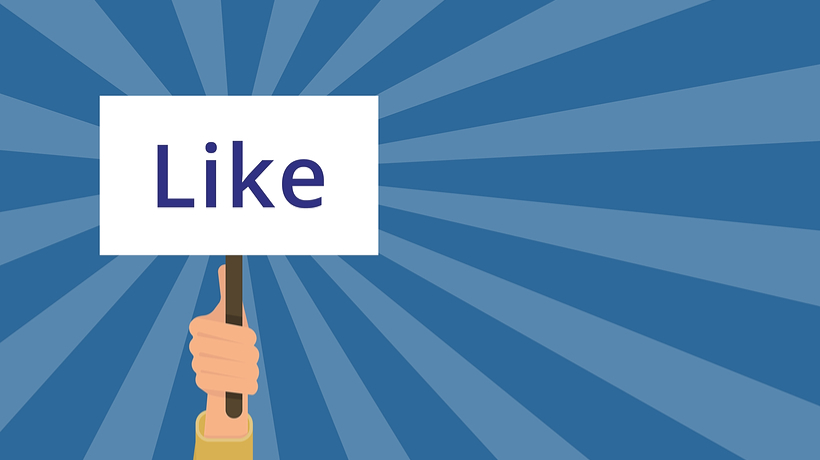Learn How To Assist Learning By Adopting Social Media Approaches
In an effort to assist learning to adapt to new realities and adopt innovative approaches, consider how Facebook engages their market and users. This is where it gets touchy as it alludes to the recent thought about developing a Netflix of learning. This got push back, and the same will probably happen here too. This article is not meant to create a "Facebook for learning" as some will attempt to purport. It's fundamentally about people (or learners) and engagement.
People either love or hate Facebook...even those who actually use it. But all agree that it's one of the most successful sites because it engages people. A recent US survey reported people visit Google, YouTube, Facebook, and Amazon regularly and frequently. As of 2019, 1.59 billion people log on daily to Facebook and are actively involved; China's population is only 1.45 billion. Facebook's population is larger than the largest country in the world.
But why do learning practitioners take issue when someone states learning should be like Netflix or Facebook? They get hung up on the terminology, such as the "Netflix" or "Facebook" of learning, rather than what it's attempting to communicate. And what is that? It's the ability to appeal to user needs and desires while fulfilling expectations. In business, this is called marketing.
The word marketing, however, also ruffles people's feathers. For many, marketing is about pushing or forcing a message on to people to make them aware of what is being offered. This old school of thought is about pressuring you to buy something. Marketing has come a long way from this, but regretfully the perception continues to persist. Funny though, most people accept when Facebook (or even Netflix) does it.
Consider what makes Facebook (or Netflix) successful and contrast why learning continues to struggle to gain business credibility. For you, it's about is applying and leveraging similar techniques to engage and retain your audience and users...you know, employees and learners.
Here are 3 points learning practitioners should take away from Facebook (or any other marketing-focused organization) about engaging and capturing their audience curiosity:
1. Know Your Users
Most people are unable to grasp the true power of Facebook. Even if you only spend a few minutes on it, they already know something about you. Even though many believe the website is the product, it isn't...you are. Your Facebook page is the "bait" to use their site for free...but it isn't exactly free in the conventional sense. They make their money by you sharing your information and interacting with others.
Yes, it sounds nefarious but this business model has been around for some time. Just like when Gillette gave away the razor handle to get users to buy proprietary blades, technology allowed Facebook to take it further.
You can do the same. Rather than going with old school methods (i.e. forcing users/learners to "learning portals" or on to LMS pages), consider working with other operational and support areas to develop engaging spaces. Consider what's relevant to the employees. What is the key to their work and responsibilities? What resources are they seeking out to solve issues? Is there an internal virtual environment that they are already using where your learning efforts can engage with them?
Recognize that people are more receptive to new ideas when they feel they can benefit from it in some way. In marketing, this is referred to as pull. Your goal is simply to draw your audience toward your learning solutions—often creating loyal users or followers.
2. Make Connections
Facebook discovered early the power of connections...it's called Facebook for a reason. Their connection model exploits the algebraic exponential regression concept. The objective is to grow your network through family, friends, and then to those you meet. Through these connections, you and everyone you connect with share the valuable information Facebook wants.
Now you're saying, "So what does this have to do with learning?" Consider informal learning. Learning practitioners tend to focus on finding ways to frame and formalize learning experiences, but a significant amount of learning, or knowledge sharing, occurs when people are not in a training session.
Don't believe me? Reflect back on the last time you had to learn something fast and went straight to Google, YouTube, or simply turned to a friend or colleague.
Your role as a learning practitioner is not to constrain or contain learning, rather it's to get people to acquire, engage, and most importantly, apply what they learn. By creating a virtual environment, encouraging people to engage and share is the first step in managing the formal and informal learning taking place.
Actively monitoring these connections provides you with valuable information to identify areas requiring attention. It also allows people to focus on applying the learning that aligns with operational expectations.
3. Offer Flexibility
Facebook is a medium allowing users to engage in what they want or need. It also allows more technologically capable users to develop solutions by leveraging the Facebook platform. Facebook offers so much value for any user level that it tries not to alienate anyone from using their offering. Again, this is what makes pull marketing so enticing.
Learning practitioners must allow for a free flow of exchanges among users. This isn't the sole responsibility for the learning function, but it's something you should involve yourself with. Just like Facebook, allow for direct messaging (FB Messenger), discussion environments, the formation of groups and group discussions (FB groups), and notifications (FB notifications). Practitioners must provide users/learners with space to engage and express themselves.
Conclusion
There is so much you can learn from the Facebook or even the Netflix model. This article can go on for pages about all of the lessons learning practitioners can take away. Again, this is not meant for you to create a similar model, it's about extracting how these leading social media sites engage users and leverage the information they acquire to their benefit.
Applying just a few of these simple concepts will certainly engage learners, and it will certainly help you to align with the needs and preoccupations of your operational leaders.
Please share your thoughts and feedback with us. We’d enjoy hearing about your efforts. And who knows, it may be the topic of our next eLearning Industry article. Also, please check out our LinkedIn Learning courses to learn more about developing your business credibility for your learning efforts. Please share your thoughts, and remember #alwaysbelearning!







